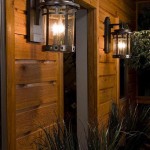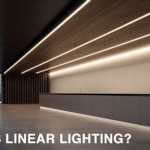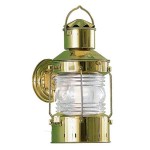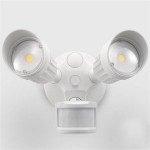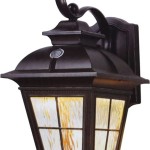Illuminating Excellence: A Comprehensive Guide to LED Outdoor Arena Lights
Outdoor arenas, serving as venues for a range of activities from equestrian events and sports competitions to concerts and community gatherings, require robust and efficient lighting solutions. LED outdoor arena lights have emerged as the preferred choice due to their superior performance, energy efficiency, and long lifespan compared to traditional lighting technologies. This article delves into the key aspects of LED arena lighting, exploring the benefits, technical considerations, and best practices for selecting and implementing these systems.
Understanding the Advantages of LED Lighting for Arenas
LED (Light Emitting Diode) technology has revolutionized the lighting industry, offering a multitude of advantages over conventional lighting options like metal halide, high-pressure sodium, and incandescent lamps. The transition to LED arena lighting provides significant improvements in several key areas, directly impacting the usability, safety, and operational costs of the facility.
One of the primary benefits of LED lighting is its exceptional energy efficiency. LEDs convert a significantly higher percentage of electricity into light compared to traditional technologies, which generate substantial heat as a byproduct. This translates into lower energy consumption and reduced electricity bills. Arenas, often large and requiring extensive illumination, can realize substantial cost savings by switching to LED lights.
Another critical advantage is the extended lifespan of LED fixtures. High-quality LED arena lights can last for tens of thousands of hours, reducing the frequency of replacements and minimizing maintenance costs. This longevity is particularly valuable in arenas, where accessing and replacing lights can be a complex and time-consuming process. The reduced downtime associated with fewer replacements contributes to uninterrupted operations and increased revenue potential.
Furthermore, LED lights offer superior light quality. They provide bright, uniform illumination with excellent color rendering, enhancing visibility and improving the overall experience for participants and spectators. Unlike some traditional lighting systems that can produce flickering or uneven light distribution, LEDs offer consistent and stable light output, reducing eye strain and improving visual comfort. The high color rendering index (CRI) of LED lights ensures that colors appear accurate and vibrant, which is particularly important for events involving visual assessment, such as equestrian competitions.
Finally, LED lights are environmentally friendly. They do not contain harmful substances like mercury, which is present in some traditional lighting systems. The reduced energy consumption of LEDs also contributes to a lower carbon footprint, aligning with sustainability goals and promoting responsible environmental practices.
Key Technical Considerations for Selecting LED Arena Lights
Choosing the right LED arena lights requires careful consideration of several technical factors. Understanding these specifications will ensure that the selected fixtures meet the specific needs of the arena and provide optimal performance.
Lumens and Light Output: Lumens measure the total amount of visible light emitted by a light source. The required lumen output for an arena depends on its size, the types of activities taking place, and the desired level of brightness. Larger arenas and events with higher visibility requirements will necessitate higher lumen outputs. It is crucial to calculate the appropriate lumen requirements based on the specific application to avoid under-lighting or over-lighting the space.
Color Temperature: Color temperature, measured in Kelvin (K), describes the color appearance of the light emitted by the fixture. Lower color temperatures (e.g., 2700K-3000K) produce a warm, yellowish light, while higher color temperatures (e.g., 5000K-6500K) produce a cool, bluish-white light. For arenas, a color temperature in the range of 4000K to 5000K is generally recommended, providing a balance between brightness and visual comfort.
Beam Angle: The beam angle refers to the angle at which the light is distributed from the fixture. A narrow beam angle concentrates the light in a small area, while a wide beam angle spreads the light over a larger area. The choice of beam angle depends on the height of the fixtures and the desired lighting pattern. Taller fixtures will generally require narrower beam angles to effectively direct the light onto the arena surface. Careful consideration of the beam angle is essential for achieving uniform illumination and minimizing glare.
Color Rendering Index (CRI): The CRI measures the ability of a light source to accurately render colors compared to natural sunlight. A higher CRI indicates better color accuracy. For arenas, a CRI of 70 or higher is generally recommended, ensuring that colors appear vibrant and realistic. This is particularly important for events where accurate color perception is crucial, such as sporting events and equestrian competitions.
Ingress Protection (IP) Rating: The IP rating indicates the level of protection offered by the fixture against dust and water. Outdoor arena lights are exposed to the elements, so it is essential to choose fixtures with a suitable IP rating. An IP65 or higher rating is typically recommended for outdoor applications, providing protection against dust and water ingress. This ensures the fixture's longevity and reliable performance in harsh weather conditions.
Fixture Mounting and Placement: The mounting height and placement of the LED arena lights are critical factors in achieving optimal illumination. Proper placement ensures uniform light distribution and minimizes shadows and glare. Typically, fixtures are mounted on poles or existing structures around the perimeter of the arena or suspended from the ceiling in indoor arenas. A professional lighting designer can provide guidance on the optimal mounting height and placement to achieve the desired lighting effect.
Dimming Capabilities: The ability to dim the LED arena lights can provide flexibility and energy savings. Dimming allows adjustment of the light level based on the specific needs of the event, reducing energy consumption during periods of lower activity. Some LED fixtures offer advanced dimming capabilities, such as programmable dimming schedules and remote control via smart devices.
Best Practices for Implementing LED Arena Lighting
Implementing an LED arena lighting system requires careful planning and execution to ensure optimal performance and longevity. Following best practices throughout the process will help maximize the benefits of the LED technology and minimize potential issues.
Consult with a Lighting Professional: Engaging a qualified lighting professional is highly recommended. A lighting designer can assess the specific needs of the arena, perform lighting calculations, and recommend suitable LED fixtures. They can also provide guidance on fixture placement, mounting heights, and control systems to achieve the desired lighting effect and ensure compliance with relevant lighting standards.
Conduct a Lighting Audit: Before selecting LED fixtures, conduct a thorough lighting audit of the existing arena lighting system. This assessment will identify areas of improvement, measure existing light levels, and determine the required lumen output for the new system. The lighting audit will provide valuable data for selecting the appropriate LED fixtures and optimizing the lighting design.
Choose High-Quality Fixtures: Investing in high-quality LED fixtures from reputable manufacturers is essential. These fixtures are designed to meet stringent performance standards and are built to withstand the rigors of outdoor use. Look for fixtures with certifications from recognized testing organizations, such as UL or ETL, to ensure their safety and performance.
Ensure Proper Installation: Proper installation is crucial for the longevity and performance of LED arena lights. Follow the manufacturer's instructions carefully and ensure that the fixtures are securely mounted and properly wired. Improper installation can lead to premature failure and void the warranty.
Implement a Lighting Control System: A lighting control system can provide enhanced control and energy savings. These systems allow for dimming, scheduling, and remote control of the LED arena lights. Consider implementing a smart lighting control system that can automatically adjust the light level based on ambient light conditions and occupancy, further reducing energy consumption.
Perform Regular Maintenance: Although LED lights require less maintenance than traditional lighting systems, regular maintenance is still necessary to ensure optimal performance. Periodically inspect the fixtures for damage, clean the lenses to remove dirt and debris, and check the wiring connections. Promptly address any issues to prevent further damage and extend the lifespan of the fixtures.
Consider Future Expansion: When designing the LED arena lighting system, consider the potential for future expansion. Choose fixtures that can be easily upgraded or added to as the arena grows and evolves. This will ensure that the lighting system can continue to meet the changing needs of the facility.
By adhering to these best practices, arena operators can maximize the benefits of LED lighting, creating a safe, efficient, and visually appealing environment for participants and spectators. The long-term cost savings, improved light quality, and reduced environmental impact make LED arena lights a worthwhile investment for any outdoor arena.

Outdoor Horse Arena Lighting Ledsuniverse

Horse Arena Lights Led Lighting For Arenas Rodeo Ledlightingsupply Com

Led Horse Arena Flood Light Choice Guide

Horse Arena Lights Led Lighting For Arenas Rodeo Ledlightingsupply Com

Horse Arena Led Lighting 16 Of Our 300 Watt Area Lights Installed

Horse Arena Lighting How To Light Up An Indoor And Outdoor By Led

Horse Arena Led Lighting 16 Of Our 300 Watt Area Lights Installed

Horse Arena Lights Outdoor Lighting Mecree Led

Led Stadium Lights Arena Indoor Outdoor Xsy Lighting

Horse Arena Lights Equestrian Race Track
Related Posts
